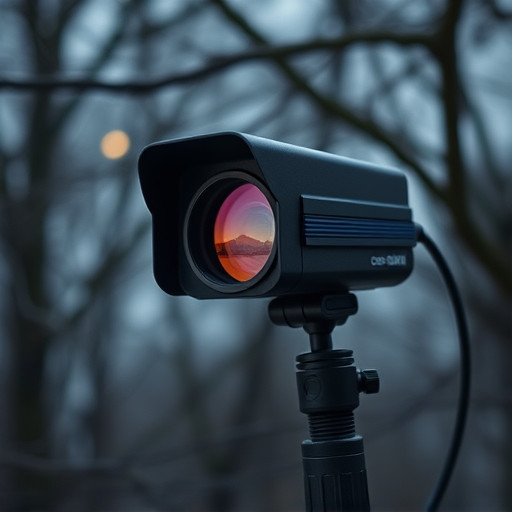Electromagnetic signal scanning is a vital security measure, and installing Dummy Dome Camera Systems optimizes this process. By strategically placing these dummy cameras, professionals simulate real-world scenarios to map and detect signals from various sources. This method combines electromagnetic knowledge with visual surveillance, enabling the design of robust security networks. The installation process involves careful selection of sites, mounting, wiring, and system calibration for accurate data collection, ensuring optimal detection in diverse environments.
Uncover the unseen with our comprehensive guide on hidden lens electromagnetic signal scanning. In today’s tech-driven world, understanding and detecting these signals is paramount. This article delves into two key aspects: “Understanding Electromagnetic Signals and Their Scanning Process” and “Installing Dummy Dome Camera Systems.” Learn how to optimize scans for accurate detection, making you a pro in navigating this intricate landscape. Discover the step-by-step process of installing dummy dome camera systems, enabling you to identify hidden lenses effectively.
- Understanding Electromagnetic Signals and Their Scanning Process
- Installing Dummy Dome Camera Systems: A Step-by-Step Guide
- Optimizing the Scan: Tips for Accurate Hidden Lens Electromagnetic Signal Detection
Understanding Electromagnetic Signals and Their Scanning Process
Electromagnetic signals, an often-overlooked aspect of modern technology, play a pivotal role in our daily lives. These signals are invisible but omnipresent, traveling through air, walls, and objects, carrying data and information. Understanding electromagnetic signals is crucial when employing advanced scanning techniques, such as those used in hidden lens electromagnetic signal scanning. By installing dummy dome camera systems strategically, professionals can simulate real-world scenarios and gain valuable insights into the behavior of these signals.
The scanning process involves meticulously mapping out and detecting electromagnetic emissions from various sources. It requires specialized equipment to capture, analyze, and visualize the signals. Through this method, experts can identify weak or unusual signals that might indicate unauthorized devices or hidden activities. By combining this knowledge with dummy dome camera systems, a comprehensive security network can be designed, ensuring optimal detection capabilities in diverse environments.
Installing Dummy Dome Camera Systems: A Step-by-Step Guide
Installing Dummy Dome Camera Systems offers a discreet and effective way to assess electromagnetic signals in various environments. Here’s a step-by-step guide for an efficient installation process:
1. Site Selection: Choose a location with optimal visibility, away from interference sources like electronics or metal structures that could distort readings. Ensure it aligns with your scanning objectives.
2. Prepare the Mounting Surface: Clean and prepare the surface where the dummy dome camera will be installed. This might involve removing existing hardware or debris to ensure a secure attachment point for your dummy camera system.
3. Secure the Dome: Carefully attach the dummy dome camera, ensuring it’s firmly in place. The dome should cover the area of interest completely while maintaining stability against environmental factors.
4. Connect Wiring: Properly route and secure all cables from the camera to the signal processing unit, following safety guidelines for electrical connections. Ensure minimal exposure to avoid damage or interference.
5. Calibration and Testing: Once installed, calibrate the system according to manufacturer instructions. Test its functionality and accuracy before initiating electromagnetic signal scanning to guarantee reliable data collection.
Optimizing the Scan: Tips for Accurate Hidden Lens Electromagnetic Signal Detection
To optimize your hidden lens electromagnetic signal scanning, consider integrating installing dummy dome camera systems. These systems mimic real security cameras but do not transmit or receive any signals, allowing for a controlled environment to test and calibrate your detection equipment. By simulating various scenarios with dummy cameras, you can ensure that your hidden lens scanner is accurately identifying electromagnetic signals from potential covert listening devices.
Additionally, regular calibration of your scanning equipment is essential. Electromagnetic signals can be influenced by environmental factors like temperature changes and electronic interference. Conducting routine checks and calibrations ensures your scanner remains precise, maximizing the chances of detecting even faint signals emitted by hidden lenses. This proactive approach will significantly enhance the accuracy of your hidden lens electromagnetic signal detection process.
The hidden lens electromagnetic signal scanning guide offers a comprehensive approach to understanding and detecting subtle signals. By following the outlined steps, from grasping electromagnetic fundamentals to optimizing scan accuracy, users can effectively employ dummy dome camera systems for precise hidden lens detection. This knowledge is invaluable in various applications, ensuring enhanced security measures and opening doors to innovative surveillance techniques.
